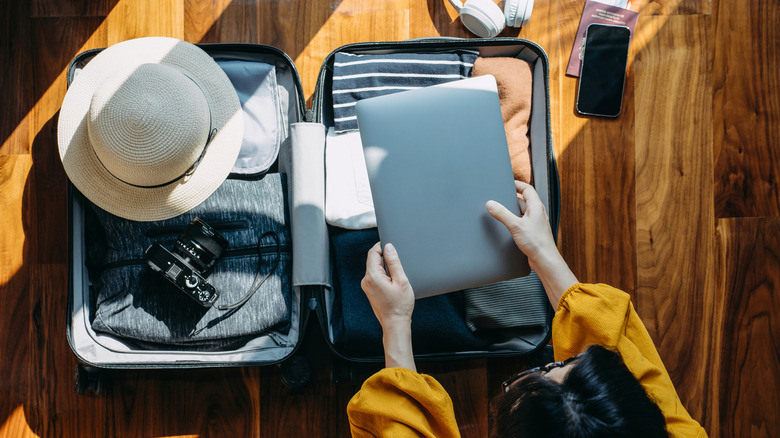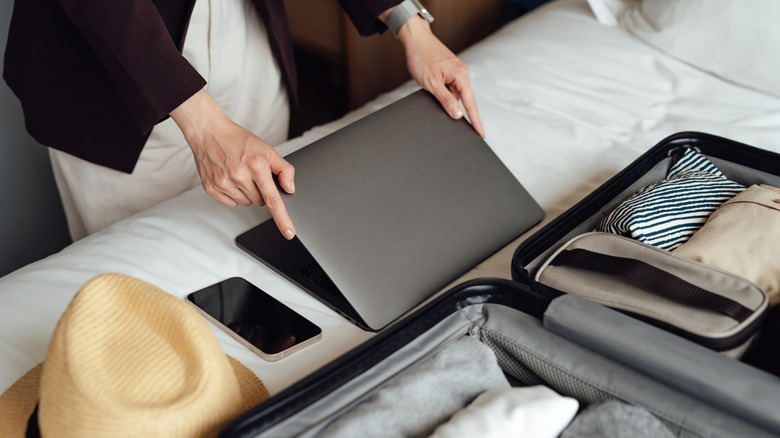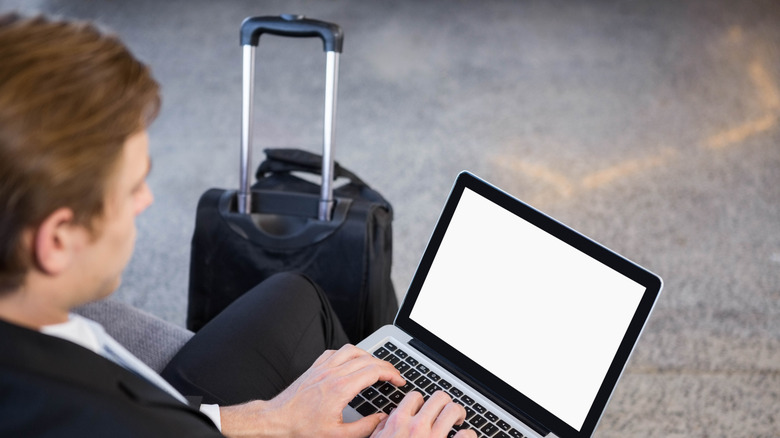Can You Check Your Laptop On A Plane? Here’s What TSA Has To Say
If you’re traveling by airplane, it’s always a good habit to check your chosen airline’s bag policies before your trip. You may want to skip the long queues at the airport and travel light with just your carry-on luggage — if that is the case, and you intend to take along a gadget or two, you need to ensure they have batteries that are allowed in the aircraft cabin.
For longer trips, you’d definitely want to know how many bags you’re allowed to check in — this is usually indicated on your email confirmation after you book a flight online — and what you’re actually allowed to bring. In general, the Federal Aviation Administration (FAA) recommends that you bring all allowable personal electronics in your carry-on bags, but there are apparently some that are allowed in checked bags as well. To help travelers, the Transportation Security Administration (TSA) has a nifty “What Can I Bring” search portal on their website that lets you plan ahead, look up your item on the list, and find out if it’s permitted to be in your carry-on bag, your checked bag, or both. What does it say about laptops?
Should you place your laptop in your carry-on or checked luggage?
Most regular air travelers already rightfully assume that keeping your laptop in your carry-on bag is preferred due to the lithium-ion or lithium metal battery in it. As well, if you happen to be going on a trip that includes a long layover, having your laptop handy along with other personal gadgets may be a good way to pass the time.
However, if you feel like you don’t need your device during the flight and airport stay and would prefer to lessen the physical load of your carry-on bags, according to the TSA, you can place your laptop in your checked baggage. You just need to be cognizant of some safety considerations before you pack the machine away.
First of all, according to the FAA’s guidance on portable electronic devices containing batteries, if a laptop — along with other similar lithium battery-powered gadgets like smartphones and tablets — must be placed in checked baggage, it needs to be completely powered off. This means you need to perform a complete shutdown on your laptop rather than just putting it to sleep.
In addition, the device also needs to be “protected to prevent unintentional activation or damage.” Packing your laptop inside a laptop bag or sleeve before placing it in your checked bag is highly recommended.
Why keeping your laptop in your carry-on bag is the better option
Even though technically a laptop can be placed in a checked bag, it’s important to note that the TSA reserves the right to subject a bag that contains even generally permitted items to additional screening if it “triggers an alarm during the screening process, appears to have been tampered with, or poses other security concerns.” A checked bag that has been flagged for whatever reason may require TSA agents to unlock it and, in some cases, remove items that are deemed too dangerous for air travel. You’ll know if your checked bag has been physically inspected if you find a “Notice of Inspection” inside it.
For your own peace of mind, opt to keep your laptop in your carry-on bag instead of your checked luggage. That way, the machine is a 100% identifiable when you’re tasked to place it in a separate bin for x-ray screening at airport security.
Source: http://www.slashgear.com/1788658/can-check-laptop-on-plane-what-tsa-says-about-luggage-requirements/
 techandtab
techandtab



